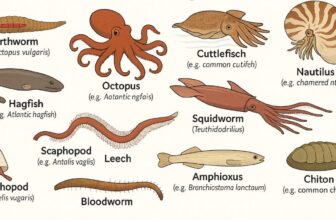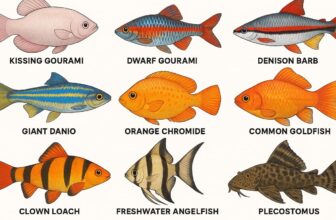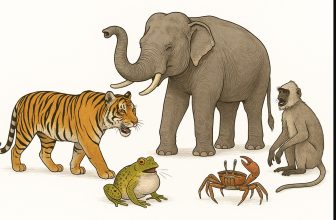Science is often seen as the pursuit of knowledge and truth, but occasionally, researchers come up with experiments that leave even the most seasoned scientists scratching their heads. These unusual experiments, which might seem more like bizarre ideas than legitimate scientific endeavors, actually received funding and institutional backing. Here are 11 of the weirdest scientific experiments that you won’t believe people actually got funding for.
11 Weirdest Scientific Experiments That Actually Got Funded:
1. The Velcro Frog
In 2006, scientists in Japan funded an experiment to see if a frog could stick to surfaces using Velcro. The idea was to study the frog’s natural ability to cling to surfaces and how it could be mimicked by Velcro-like materials. The researchers attached strips of Velcro to the frogs and observed how they clung to various surfaces. While the study didn’t revolutionize science, it certainly captured the public’s imagination.
2. The ‘Laughing’ Rats Experiment
In a peculiar experiment funded by the National Institutes of Health (NIH), scientists tried to teach rats to laugh. Researchers used tickling as a method to induce laughter-like reactions in rats. The purpose was to observe the role of laughter in communication and stress relief. While the results were amusing, the project raised ethical questions about the humane treatment of animals.
source – https://www.youtube.com/watch?v=d-84UJpYFRM
3. The Moon’s Influence on Human Behavior
In an experiment designed to prove that the moon affects human behavior, scientists tried to link the lunar phases with human mental health issues, like anxiety and sleep disorders. This controversial study received funding, despite lacking strong scientific evidence. The experiment showed no conclusive relationship, but it did spark debates about lunar influence that continue to this day.
Source – https://health.clevelandclinic.org/moon-effects-on-humans
4. The Invisible Man
In 1939, a group of researchers received government funding to conduct an experiment based on the theoretical concept of invisibility. Their goal was to create a cloaking device for soldiers. Though the science behind invisibility technology was still in its infancy, this experiment laid the foundation for later research into metamaterials and invisibility cloaks, though the results were far from “invisible.”
Source – https://en.wikipedia.org/wiki/Cloaking_device
5. The Human-Chicken Hybrid
In the 1980s, a U.S. government-funded study explored whether human cells could be merged with chicken cells to study the development of early human embryos. The goal was to better understand genetics and human development. This ethical and moral debacle was widely criticized, and the project was eventually shut down. However, it raised important debates about genetic engineering and human experimentation.
Source – https://academic.oup.com/jmp/article/43/2/187/4931242
6. The Bat Bomb
During World War II, the U.S. government funded an experiment that involved attaching bombs to live bats. The goal was to use bats as a form of “biological warfare” by attaching incendiary bombs to their bodies and releasing them over enemy territories. Although the project was eventually canceled, the bat bomb remains one of the strangest wartime experiments in history.
Source – https://www.warhistoryonline.com/war-articles/bat-bomb.html
7. The Drinking Birds
In an odd yet popular experiment, researchers funded the construction of mechanical birds that seemingly drank water endlessly. The birds were part of a physics experiment to demonstrate thermodynamics and the working principles of heat engines. While the experiment didn’t lead to any major scientific breakthroughs, it remains a bizarre example of how seemingly simple systems can be used to explain complex concepts.
Source – http://users.df.uba.ar/giribet/f4/drinking_bird.pdf
8. The Social Isolation of Monkeys
In the 1950s, a series of experiments funded by the U.S. government sought to understand the effects of social isolation on monkeys. The most notorious experiment involved placing infant monkeys in solitary confinement with no contact with their mothers or other monkeys. This cruel experiment led to psychological trauma for the monkeys, sparking debates on ethics in animal research that continue today.
9. The Cow on a Treadmill
In 2005, a study funded by the European Union examined how cows can be trained to walk on treadmills. The purpose was to measure the physical activity and health of the cows to improve dairy farm practices. The research found that cows, like humans, benefit from exercise, but the sheer absurdity of the experiment made it a topic of ridicule.
Source – https://www.journalofdairyscience.org/article/S0022-0302%2803%2973881-8/fulltext
10. The Telekinetic Fish
A 2010 experiment funded by the National Science Foundation aimed to investigate the possibility of telekinesis by testing whether fish could move objects with their minds. While telekinesis remains unproven, the researchers used specialized equipment to monitor the fish’s movements. The experiment was part of a broader investigation into animal behavior and psychic phenomena, though it yielded no groundbreaking results.
Source – https://new.nsf.gov/news/how-electric-fish-evolved-their-electric-organs
11. The ‘Stressed’ Plants
An experiment funded by the Japanese government tested the theory that plants could sense human emotions. Researchers subjected plants to stress by exposing them to both positive and negative emotions, recorded through physical responses like leaf movement. Although the plants appeared to respond to the “energy” emitted by humans, the scientific community remains divided on whether emotions influence plant life.
Source – https://www.rib.okayama-u.ac.jp/english/research/researchgroup2/
Summary: The Line Between Innovation and Absurdity
While these experiments may seem bizarre, they reflect the innate curiosity of scientific exploration and the willingness to push the boundaries of knowledge, even if the conclusions are far from practical or ethically sound. These strange and unusual experiments remind us that science, while often a path to discovery, can also sometimes take unexpected detours into the realm of the absurd. But that’s the beauty of it – every experiment, no matter how odd, brings us a step closer to understanding the strange world we live in.





